 Image search results - "to" Image search results - "to" |

Letter of Thanks from PhilI really enjoyed my first trip to Finland during September 4-18, 2005 (Sept. 8-17 in Kuusamo) and savored every hour. The people in Kuusamo were all so nice and it was a great pleasure to meet and see the work of many talented and dedicated photographers from Europe.
They have definitely piqued my interest and opened my eyes to the nature and wildlife in northern Europe and the Arctic region. I've also become much more keenly aware of the seriousness of global warming. People in Finland have told me how the climate has become noticeably warmer over the decades. Such countries near the polar regions are the first to feel and see the detrimental effects of global warming. I really hope we can someday reverse the trend.
I want to thank the people who made my sponsored trip and participation in Kuusamo Nature Photo 2005 possible and very enjoyable. After months of email correspondence with the festival staff, it was great to finally meet all of them face to face. It makes a big difference when you know the face and person behind the name.
I know they worked very hard to pull off a very successful nature photo festival. For all the email correspondence, coordination, and making all the arrangements, I especially want to thank the following:
Lassi Rautiainen, Kuusamo Nature Photo Director
Pekka Pirhonen, Kuusamo Culture Department Manager
Seija Väisänen
Hannele Pappila
Town of Kuusamo
Corporate sponsors
I also want to personally thank the following people:
Pirkko Väätäinen, my interpreter who interpreted my three slide shows into Finnish.
Hannu Hautala and wife Irma, for having us over at his home/office. Despite his fame, Hannu is a very down-to-earth and warm-hearted man. It was a great pleasure to meet him, to see his collection of Japanese photo books, and hearing about his two trips to Japan.
Barbara, for videotaping my slide shows with my video camera and taking some great snapshots of me enjoying myself in Kuusamo. And also for providing transportation to/from the airport.
Tõnu Ling, for taking snapshots of me in Kuusamo and being my first friend in Kuusamo (we met on the plane to Kuusamo).
Koillis sanomat newspaper and reporter Tuomo Pirttimaa for interviewing me in an article they published.
Again, I have to thank Lassi for everything. He was the one who took care of all the details even during our nature trips. Lending sleeping bags, carrying hot drinks in heavy thermos bottles, driving us all over the place, answering all our questions, taking pictures of us, and making sure everyone had an enjoyable time. He turned out to be quite humorous. I can highly recommend him to anyone who needs a very knowledgeable local guide to watch or photograph wildlife in Finland.
See his Web site: Articmedia
Finally, I want to thank all the people and photographers I met at Kuusamo for their pleasant company and friendship. Remember that you have a friend in Japan. If you ever come and visit, let me know.
Meanwhile, I hope you enjoy this permanent online gallery of Finland photos explained in both English and Japanese.
Philbert Ono
Tokyo, Japan
P.S. In case you don't know, "kiitos" means thank you in Finnish.
|
|

Dai-hiwatari Festival, Mt. TakaoMore pictures here
|
|

My video of 2023 Koenji Awa Odori. 第64回高円寺阿波おどり
|
|

My video of 2018 Koenji Awa Odori 第62回高円寺阿波おどり
|
|

My video of 2017 Koenji Awa Odori (56 troupes) 第61回高円寺阿波おどり
|
|

My video of 2016 Koenji Awa Odori (56 troupes) 第60回高円寺阿波おどり 56連の総集編
|
|

My video of Koenji Awa Odori 2015 第59回高円寺阿波おどり 40連の総集編
|
|

My video of Koenji Awa Odori 2013 Part 1/3 第57回 東京高円寺阿波おどり 総集編
|
|

My video of Koenji Awa Odori 2013 Part 2/3 第57回 東京高円寺阿波おどり 総集編
|
|

My video of Koenji Awa Odori 2013 Part 3/3 第57回 東京高円寺阿波おどり 総集編
|
|

My video of Koenji Awa Odori 2011 Part 1/2 高円寺阿波おどり
|
|

My video of Koenji Awa Odori 2011 Part 2/2 高円寺阿波おどり
|
|

My video of Koenji Awa Odori 2009 Part 1/3 - Kokesaku 苔作
|
|

My video of Koenji Awa Odori 2009 Part 2/3 - Kikusui-ren 菊水会菊水連
|
|

My video of Koenji Awa Odori 2009 Part 3/3 - Asuka-ren 飛鳥連
|
|
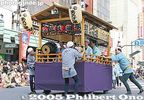
Sadly, the Tokyo Jidai Matsuri no longer held. It used to be held annually on Nov. 3 (Culture Day) in Asakusa, Tokyo.the Tokyo Jidai Matsuri (Festival of Historical Periods) is a parade tracing the history of Tokyo with over 1,600 people dressed in the respective period's costume. This is the lead float playing music. It took about an hour for the parade to reach Kaminarimon Gate.
Lead Float: Edo festival music played by children. Kodomo Edo-bayashi yatai
先導 子供江戸囃子屋台
|
|
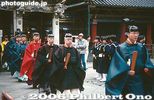
Also called "Sennin Gyoretsu" (1,000-person Procession 千人行列), this is Nikko's largest festival held on May 17-18. The highlight is a long procession of over 1,000 people dressed in various costumes.The three portable shrines are dedicated to the spirits of Tokugawa Ieyasu, Toyotomi Hideyoshi, and Minamoto Yoritomo. Photos start with May 17 at Toshogu Shrine, when priests gathered for a ceremony. 発興祭
|
|
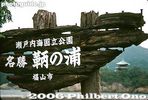
Sign for Tomonoura. Tomonoura is a National Important Traditional Townscape Preservation District (重要伝統的建造物群保存地区).
|
|

One of the Big Three Festivals in Tohoku, the Kanto Matsuri has men in happi coats balancing tall paper lantern-bedecked bamboo poles, called kanto, on their foreheads, shoulders, hand palms, or hips. Held on Aug. 3 to 6 near JR Akita Station.A kanto is carried to the festival site before nightfall.
|
|
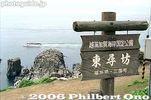
Tojinbo sign indicating the Echizen-Kaga Coastal Quasi-National Park
|
|
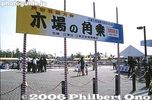
Kiba Park with Kiba Kakunori sign. Traditional folk performances are held on the same day as Koto Ward's Citizen's Festival in mid-Oct. So the park is quite crowded.
|
|

Haneda to Tokushima
|
|
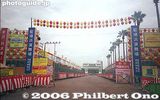
One of Japan's grandest festivals, the Tokushima Awa Odori is a summer dance performed in central Tokushima city. Numerous dance troupes called "ren" appear in a long parade along the city's main streets for four evenings in mid-Aug. About 2 million people see it during the four days it is held. It is like a bon dance to greet the souls of the deceased returning to visit. There are other Awa Odori festivals in Japan, but the one in Tokushima is the original and largest one. "Awa" is the former feudal name of Tokushima. Photo: Entrance to one of the spectator areas called "embujo" (admission charged). 藍場浜演舞場
|
|
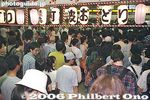
Crowd at JR Koenji Station on Awa Odori night.The Koenji Awa Odori is basically a parade of dancers. Many groups of dancers from various parts of Japan participate in the parade that follows the main shopping streets near Koenji Station on the Japan Railways Chuo Line in Tokyo.
|
|
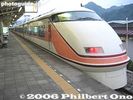
Tobu Line train to Nikko. It takes about 2 hours from Asakusa, Tokyo.
|
|

April 8, 2006 at Ushigome-Tansu Kumin Hall in Kagurazaka, TokyoStarting at 4 pm, this was the third and last show of the day and all 400 seats were sold out.
The performance had two parts separated by a 20-min. intermission. Each part had several different dances.
|
|

Before 8 am: Women do a warm-up lap.It wasn't exactly warm, but they had wet suits. Odaiba's water is not exactly crystal-clear clean either.
|
|

Established in 1617, Tsukiji Hongwanji temple is the Tokyo headquarters of the Nishi Hongwanji Jodo Shinshu sect. The present temple, based on Indian architecture, was built in the 1930s.The temple is the only one in Japan which is under the direct control of the sect. Its head priest is the Monshu Abbot himself. April 8 is observed as Buddha's birthday, called Hana Matsuri ("Flower Festival) in Japan.
|
|

Yasukuni Shrine is Japan's most prominent shrine for the war dead. Near Kudanshita Station on the Tozai Subway Line. This is the first giant torii
|
|

One of Kyoto's Big Three Festivals held on May 15. The Aoi Matsuri's colorful procession of over 500 people in Heian-Period costumes start off at the Kyoto Gosho Imperial Palace and head for the Shimogamo and Kamigamo Shrines. Kyoto Gosho Imperial Palace 京都御所: The first ox carriage waits for the procession to start. The ox carriage is called a gissha. 牛車
|
|

Very little remains of Otowa castle originally built by Lord Gamou Sadahide. Two battles took place here in 1496 and 1503. Road to Otowa Castle on the hill seen on the left.
|
|

Torokko train at Arashiyama for Hozu Gorge
|
|

Kameyama Castle is now headquarters to a religion called Omoto-kyo which acquired the castle property in 1919. Only stone walls and moats remain.Statue of shachihoko.
|
|

PR poster for the Kamogawa Odori geisha dance held during May 1-24 in Pontocho.
|
|

Kakegawa Castle as seen from the train
|
|

Yasukuni Shrine during the Mitama Matsuri before dark.
|
|

Nijo-jo castle was built on the order of Tokugawa Ieyasu to serve as the Kyoto residence for the Tokugawa shoguns. Although it does not have a castle tower, Nijo-jo Castle is Japan's best preserved and most magnificent castle palace.Seinan-sumi (Southwest corner) Turret is the first castle building you see when you walk from the station. Important Cultural Property 西南隅櫓
|
|

Kanagawa Prefecture's largest Awa Odori is held annually during the last weekend in July in this city of Yamato. Preview event near Yamato Station.
|
|

Maruoka Castle is Japan's oldest surviving castle tower although it collapsed during the Fukui Earthquake in 1948. Rebuilt in 1955 with most of the original materials. Originally built in 1576 by Shibata Katsutoyo, nicknamed Kasumiga-jo (Misty CastlePhoto: Way to Maruoka Castle from the bus stop.
|
|

Bridge to castle grounds. 5-min. walk from Fukui Station.
|
|

Road marker. Established in 1642, Moriyama-juku was the sixty-seventh of the sixty-nine stations or shukuba post towns on the Nakasendo Road. It is the eighth Nakasendo station in Shiga (following Musa-juku in Omi-Hachiman).
|
|

Nose Myokenzan Betsuin at a street corner. In Feb., priests at this small temple splash cold water on themselves for 30 min. Near Honjo-Azumabashi Station on the Toei Asakusa Line or JR Kinshicho Station on the Sobu Line.
|
|

Tokyo Dome on March 3, 2006, the first day of the WBC's Asian Round.
|
|

Hanegi Park is near Odakyu Umegaoka Station ("Umegaoka" means plum hill). 小田急梅ヶ丘駅
|
|

Welcome to IbarakiTrain platform of Kairakuen Station.
|
|

To Tokyo Big Sight
|
|

Sign and entrance to Tokyo Big Sight
|
|

Yoshino Baigo was a valley and hillside covered with ume plum trees. It boasted a wide variety of different plum blossoms. During full bloom as you can see here, the scenery was spectacular. One of the largest plum groves in Japan.Platform of Hinata-Wada Station with welcome banner 日向和田駅. Banner says, "Yokoso, Ume no Sato Yoshino Baigo." Yokoso means "welcome," and Ume no Sato means "plum town."
To get to Hinata-Wada, you have to change trains at Ome Station on the JR Chuo Line.
|
|

Well-wishers look on as rowers embark for the race taking place at the same venue where the rowing competition was held at the 1964 Tokyo Olympics.
|
|
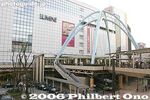
JR Tachikawa Station
|
|
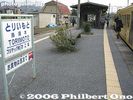
Toriimoto-juku is the sixty-third of the sixty-nine stations or shukuba post towns on the Nakasendo Road. It is the fourth Nakasendo station in Shiga (following Bamba-juku in Maibara), and one of ten Nakasendo stations in Shiga.
|
|

Cherry tree forest near the Nishi-guchi (west) gate.
|
|

The outdoor architectural museum is within Koganei Park in Koganei, Tokyo. This is the Visitors Center.
|
|

Ryogoku Kokugikan sumo arena as seen from Ryogoku Station
|
|

The Kokugikan as seen from JR Ryogoku Station platform.
|
|

Scenery along the way by bus to Ainokura from Shirakawa-go.
|
|

Toyama Castle 富山城
|
|

PR poster designed by Tetsuo OshiroPoster for the race.
京都大学ボート部OBの尾城徹雄様に作成したポスター。大学内や大津市石山商店街などで張り出された。
|
|
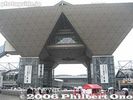
On June 6, 2004, the Athens Olympic Torch Relay came through Tokyo as it has been doing at all cities in the world which had held a Summer Olympics. Starting point: Tokyo Big SightI chased the flame for Athens at several points in Tokyo.
|
|
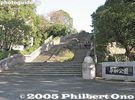
Entrance to the Peace Park
|
|
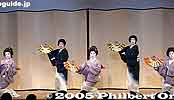
"Hana no Kai" Dance by Kagurazaka geishaThe "Hana no Kai" geisha dance is held annually by geisha in Kagurazaka, one of Tokyo's major geisha districts. "Hana" means livley or gaudy. And "Kai" can mean gathering or party.
They held two shows on the same day. This was the second show starting at 3 pm on April 16, 2005. It lasted till about 4:45 pm.
|
|
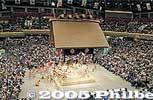
More people than the real tournamentAbout 8,000 people took time out from their Golden Week holidays to see this official sumo practice of all sumo stables.
|
|
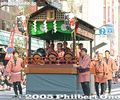
This page is a complete English guide to all the groups that appear in the parade. The parade assembles behind Sensoji Temple and starts at 1:30 pm from Nitenmon gate. The procession then goes down Umamichi-dori street, passes by Matsuya Department Store.先導 子供江戸囃子屋台
|
|
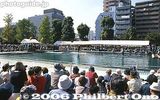
Huge crowd at Kakunori pond in Kiba Park.
|
|
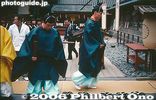
Prayer ceremony by priests
|
|

Ferry between Tomonoura and Sensui island.
|
|

The festival is held along a straight, 800-meter section of San'o Odori Road, a 20-min. walk from Akita Station.In the evening, the main event starts at 6:38 p.m. with a taiko drum-beating performance or minyo dancers on San'o Odori Road. At 7:17 p.m., some 200 kanto are carried into the street to the sound of flutes and taiko drums. At 7:40 p.m. following a brief address by the city's mayor, the performance begins as the kanto are raised all at once.
|
|

Tojinbo in Mikuni-cho is spectacular, natural rock columns and walls on the coast. Hiking trails and boat rides give you a closer look at this rare natural monument. Tojimbo is accessible by bus from JR Awara Onsen Station on the Hokuriku Line.
|
|
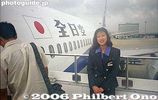
Hi Philbert! Welcome aboard!
|
|
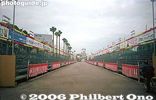
Spectator seats. Admission is 1,000 to 2,000 yen.
|
|

Each dance troupe starts with a lantern bearer showing the name of the troupe.The dance is quite simple. While bobbing up and down, the dancer holds her hands above the head and shakes the fingers. This hand gesture indicates that the person has gone crazy. It is therefore nicknamed the "fool's dance." The dance is held on the last weekend in August.
|
|

Inside Tobu Line train
|
|

Part 1 - Edo Scenes (江戸風情): 1. Fuji Murasaki (Purple Wisteria) 藤むらさきDancers: 小奴、千佳、由良子、舞子
|
|

Ninomaru Northern Stone wall along a moat. 二の丸北面石垣
|
|

Women at the starting line for triathlon
|
|

Tsukiji Hongwanji temple gate with wisteria crest.The emblem is a wisteria flower and symbol of the Jodo Shinshu sect.
|
|

Path to shrine
|
|
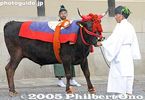
The bull was mooing all the time and was very restless.Do bulls moo or do they snort? This was making a loud noise.
|
|
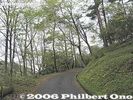
The castle is somewhat out of the way. It's a 15-min. walk from the nearest bus stop.
|
|

Pontocho Kaburenjo theater, venue for Kamogawa Odori.
|
|
|
|

Kameyama Castle was built by Akechi Mitsuhide in the 16th century as his base for his conquered Tanba region.
|
|
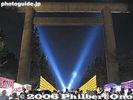
Yasukuni Shrine's main torii during Mitama Matsuri
|
|

Yotsuashi-mon GateMain gate to enter the castle grounds. A reconstruction.
四足門
|
|
|
|
|

Entrance to castle grounds
|
|

Bridge to castle grounds with prefectural capital building looming ahead.
|
|

Road marker. Go right for the Nakasendo Road. MAP
|
|

Shrine hall
|
|

Tokyo Dome
|
|

Entrance to Hanegi Park's plum grove
|
|

Finish line end of the 2000-meter Toda Boat Course.
|
|

Train platform of Kairakuen Station
|
|

Entrance to Tokyo Big Sight
|
|

Tokyo Big Sight hallway
|
|

Closest train station is Hinata-Wada Station. To get to Hinata-Wada, you have to change trains at Ome Station on the JR Chuo Line. 日向和田駅Sadly, spring 2014 was the last time we could see these trees. The plum trees were infected by the plum pox virus and the city cut down all the trees in 2014 to wipe it out. These photos were taken in 2006 when the plums were still fully glorious. Good news is that they have been replanting since 2016.
|
|
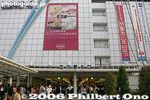
JR Tachikawa Station entrance
|
|
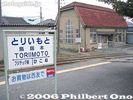
Although the Honjin is long gone, there are a few reminders of its shukuba past. Near Ohmi Railways Toriimoto Station. Map
|
|

Koganei Park sakura
|
|

Going to visitors center
|
|

Crowd outside the Kokugikan await their favorite wrestlers.
|
|
|
|
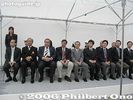
Dignitaries at the torch relay starting ceremony.
|
|

Peace Fountain with the Peace Statue in the distanceA fountain of water was made for the victims who were desperate for water.
|
|

"Blue Ocean Waves" (青海波)They performed four numbers. This first one was called "Blue Ocean Waves" performed by five geisha.
|
|
|

From Matsuya Department Store, the procession turns right into Kaminarimon-dori street which passes in front of the famous, giant red lantern called Kaminarimon Gate. Lead float with Edo festival music played by children. 先導 子供江戸囃子屋台
|
|
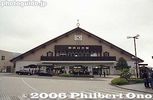
Tobu Nikko Station 東武日光駅
|
|

In front of the portable shrine storehouse for the three mikoshi. A ceremony is held to transfer the spirits from the main shrine to the portable shrines. 神輿舎にて宵成渡御This building is right next to the famous Yomei-mon Gate at the Toshogu Shrine.
神輿舎にて宵成渡御
|
|
|
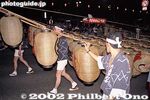
A kanto is carried into the street to the sound of flutes and taiko drums.
|
|

Huge rock columns stand about 9 stories (25 meters) high.
|
|
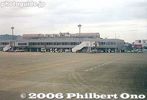
Tokushima Airport
|
|

Crowds already line Tokushima's main street soon to be closed to traffic.
|
|
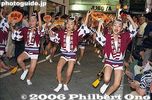
The troupe can consist of children (as young as age 2 or 3), women, and men.The Awa Odori originated 400 years ago in Tokushima Prefecture (in Shikoku) where it is one of Japan's most famous festivals. Although it is not as large as the one in Tokushima, the Koenji Awa Odori in Tokyo has become a major summer festival in Tokyo.
|
|
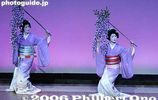
1. Fuji Murasaki (Purple Wisteria)
|
|

Temple gate and flag
|
|
|

Norijiri horseman leads the procession. 乗尻The procession, called Roto-no-Gi (路頭の儀), is actually one of three rites performed during the festival.
|
|
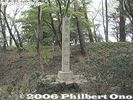
The castle met its demise in 1522 less than 60 years after it was built, after a war within the Gamou Clan. It now serves as a large hilltop park with good views of the surroundings. Otowa Castle marker
|
|
|

Statue of shachihoko roof ornament
|
|

Pontocho is a narrow alley and known as a geisha district.
|
|

Promenade to the shrine
|
|
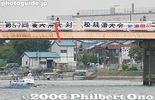
Karahashi Bridge as the starting point for alumni races
|
|

Steps to the castle tower
|
|

Minami-mon (South) Gate 南門
|
|

Pre-festival event held in the afternoon, Yamato Awa Odori
|
|

The stone marker says National Treasure Kasumiga-jo Castle.The castle was a National Treasure until it collapsed in the 1948 Fukui Earthquake. Now an Important Cultural Property.
|
|
|

Rear of road marker
|
|

Barrels of cold water in front of shrine
|
|

Front entrance to Tokyo Dome. Japan plays its first WBC game and the opponent is China.
|
|

End of the Toda Boat Course, near the 2000-meter finish line.
|
|

The plum trees are on a small hill.
|
|

Train platform of Kairakuen Station
|
|

Photo Imaging Expo 2006 sign
|
|

Corridor to anime fair
|
|

Although still small, the replanted plum trees have been flowering. and the groves have reopened to the public. Yoshino Baigo poster. Yoshino Baigo is a small town in Ome city near Hinata-Wada Station.
|
|
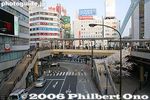
JR Tachikawa Station walkways
|
|
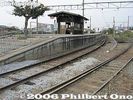
Ohmi Railways Toriimoto Station platform
|
|

Huge trees shower you with cherry blossoms.
|
|

Visitors Center entrance courtyard
|
|

Crowd enters the Kokugikan for Musashimaru's retirement ceremony on Oct. 2, 2004.
|
|
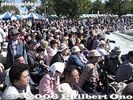
It starts at 11 am, so if you want a good view, go there early.
|
|
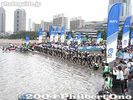
Starting line
|
|

Looks like Suganuma, another village in Gokayama area.
|
|

Reconstructed in 1954, modeled after Hikone and Inuyama Castles. Renovated in Nov. 2005.
|
|
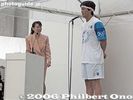
Nagashima Kazushige substitues for his father, baseball hero Nagashima Shigeo, who was hospitalized.
|
|
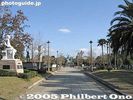
Path to Peace Statue
|
|

Notice that the kimono design shows waves.
|
|

Yokozuna Deliberation Council membersIn the middle is Kitanoumi.
|
|

Lead float with Edo festival music played by children. The names of the children playing are written on the red lanterns hanging above. Kodomo Edo-bayashi yatai 先導 子供江戸囃子屋台
|
|

Shinkyo Sacred Bridge, Nikko 神橋
|
|
|
|
|
|
|

Tokushima Station
|
|

These photos were taken in Aug. 1999.
|
|

The Koenji Awa Odori has become a major summer festival in Tokyo. It had a humble beginning in 1957 when it was originally called the Koenji Baka Odori. "Baka" means fool.
|
|

Kiba Sqaure Log Rolling is performed by the Kiba Kakunori Hozon-kai or Preservation Society. 木場角乗保存会
|
|

1. Fuji Murasaki (Purple Wisteria)
|
|

Dobashi-mon Gate stone walls 土橋門石垣
|
|

8:10 am: And they're off, taking about 30 min. to swim 1.5 km.
|
|

Play room for kids on Hanamatsuri
|
|

Statue of Omura Masujiro (1824-1869) 大村益次郎, founder of Japan's modern army. Also pushed for the establishment of Yasukuni Shrine.
|
|

10:30 am: Starting point at Kyoto Gosho Imperial Palace 京都御所 出発The procession is ready to depart.
|
|

Suzuka Quasi-National Park markerThe area is within this park.
|
|

Dance program for 2005.
|
|
|
|
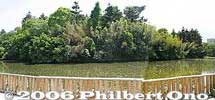
Castle compound and moat
|
|
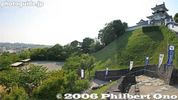
Castle tower
|
|

Spotlights create a silhouette of the statue of Omura Masujiro (1824-1869) 大村益次郎, founder of Japan's modern army.
|
|

Tonan-sumi (Southeast corner) Turret, Important Cultural Property 東南隅櫓
|
|
|

Maruoka Castle tower
|
|

Statue of castle founder and 1st lord, Yuki Hideyasu 結城秀康
|
|

Marker for the Kabuto-ya inn
|
|

Barrels of cold water
|
|

Chinese team is introduced.
|
|

Housing for visiting rowing teams whose school flags are displayed.
|
|

Hanegi Park has plum blossoms in mid-Feb. to early Mar. It has about 700 plum trees and also sports facilities and public library.
|
|

Plum Blossom Queen at Kairakuen StationShe was passing out maps of the garden. It was a nice touch to see two of these kimono beauties greeting us.
|
|

Hallway
|
|

PR poster
|
|

Road to Yoshino Baigo. Almost the entire town is lined with plum trees.
|
|
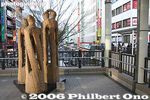
Walkway sculpture
|
|

Ohmi Railways Toriimoto Station building
|
|
|
|
|

Passing out programs
|
|
|
|

An Olympic torch attendant stands by to hand over the torch. In his right hand, he holds a small lantern housing a little flame in case the main torch is snuffed out.
|
|

Sekigahara saw one of Japan's most pivotal battles on Oct. 21, 1600 (Sept. 15 of Keicho 5) between Tokugawa Ieyasu's Eastern Forces and Toyotomi Hideyoshi loyalist Ishida Mitsunari's Western Forces. Ieyasu's victory in the Battle of Sekigahara sealed Japan's historical fate for the next 250 years. The former battlefield is dotted with monuments indicating the positions of various warlords during the battle.
This photo shows Mt. Momokubari where Tokugawa Ieyasu first set up his base camp for the Battle of Sekigahara. It is next to busy Route 21. A short distance east of Sekigahara Station. The former Sekigahara battlefield has numerous monuments.
|
|

Banners and a monument mark the spot on Mt. Momokubari where Tokugawa Ieyasu's first base camp was established during the Battle of Sekigahara on Sept. 15, 1600.
|
|

Ieyasu and his troops were here from about 6 am to 10 am on the day of the Sekigahara battle. He later moved closer to the front line as the battle was going his way. This is a National Historic Place. 桃配山 徳川家康最初陣跡
|
|

Steps going up to Tokugawa Ieyasu's first base camp at Momokubari during the Battle of Sekigahara on Oct. 21, 1600 (Sept. 15 of Keicho 5). Today it's just a small hill. The highway seemed to have cut through most of it.
|
|

Steps going up to Tokugawa Ieyasu's first base camp during the Battle of Sekigahara.
|
|

At the top, see the two large rocks which served as a table and bench for Ieyasu. 家康の腰掛岩と机石
|
|

Monuments marking Tokugawa Ieyasu's first base camp during the Battle of Sekigahara. The banners have the Tokugawa family crest.
|
|

View of the Sekigahara battlefield from Tokugawa Ieyasu's first base camp at Momokubari.
|
|

Monument marking Tokugawa Ieyasu's first base camp during the Battle of Sekigahara.
|
|

Another smaller monument marking Tokugawa Ieyasu's first base camp during the Battle of Sekigahara.
|
|

Sign explaining that the two rocks below were said to be used as a bench and table for Ieyasu.
|
|

Behind the monuments is a trail probably used by Ieyasu's troops on Mt. Momokubari-yama.
|
|
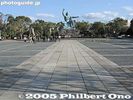
Peace StatueEvery Aug. 9, the anniversary of the atomic bombing, a memorial service is held here.
|
|
|
|
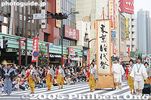
Tokyo Jidai Matsuri Banner and Tekomai geisha. From top to bottom, the banner reads, "Tokyo Jidai Matsuri." It marks the official and real start of the festival parade. The first Tokyo Jidai Matsuri was held in 1989. 東京時代祭本旗The first Tokyo Jidai Matsuri was held in 1989. Slight changes in the festival have been made since. Instead of two oiran courtesans, there is only one now. And at the end of the parade, the Asakusa Revue of showgirls used to be the anchor. But they are now gone.
東京時代祭本旗、手古舞
|
|
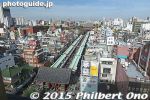
Bird's eye view of Asakusa with Kaminarimon Gate (big red lantern) and Nakamise arcade.
|
|
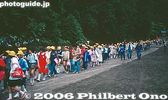
Kids on school trip along Omotesando 表参道
|
|

The three portable shrines (mikoshi) are then carried out of the storehouse to be taken to Futarasan Shrine.
|
|
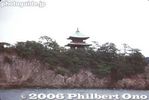
Bentenjima island near Tomonoura.
|
|

The largest kanto is 12 meters high, weighs 50 kilograms, and has 46 paper lanterns. The smaller kanto are 5 and 7 meters high. The kanto symbolizes a ripe rice plant with unhusked golden grains (the paper lanterns). The festival is therefore a prayer for a good harvest.
|
|

Bungee jumping is probably not possible here.
|
|

In front of Tokushima Station
|
|
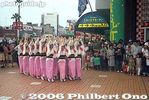
Pre-festival warm-up performance.
|
|

Kiba used to be where wood and lumber were stored and produced. 相乗り
|
|

1. Fuji Murasaki (Purple Wisteria)
|
|

Dobashi-mon Gate stone wall 土橋門石垣
|
|
|
|

Hanamatsuri altar
|
|
|

The procession basically consists of two columns: The Hon-retsu which includes the procession's highest-ranking official called Chokushi. It consists of men. The second and longer column is the Saio-dai-retsu consisting of women.
|
|

Entrance to castle grounds, now a picnic and playground.
|
|

Barrels of sake next to the theater.
|
|

Hozu River
|
|

Castle moat
|
|

A bon dance around the base of the statue.
|
|

Kyoto Univ. in dark blue T-shirts
|
|

Stairs to Kakegawa Castle tower
|
|

Tonan-sumi (Southeast corner) Turret 東南隅櫓
|
|

Yamato Station
|
|

Maruoka Castle tower
|
|

Valley between the prefectural capital (left) and police department (right).
|
|

Old Nakasendo Road and Dobashi Bridge. Supposedly, this is the bridge from where Hiroshige drew his print of Moriyama-juku.
|
|

The congregation gather on the steps and beat fan-shaped drums.
|
|

Japan's National Anthem is played.
|
|
|

Plum Blossom Queen
|
|

Boat landing near finish line.
|
|

To PIE 2006 held in late March.
|
|

The crowds
|
|

Tamagawa River as seen from the bridge.
|
|
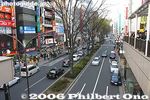
Street
|
|

One trademark of the dancers is the crescent-shaped straw hats.
|
|

Ohmi Railways Toriimoto Station building
|
|
|
| 34157 files on 136 page(s) |
1 |
 |
 |
 |
 |
|